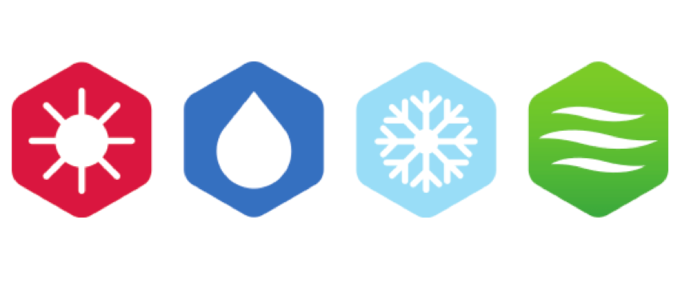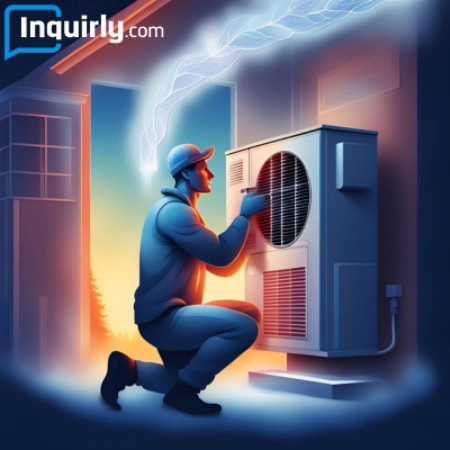Heating and cooling account for around 48% of the average annual US household energy use. This statistic is beyond the numbers, meaning how essential HVAC systems are throughout the year, no matter the season.
In short, demand is always there, but whether it is high or low is determined by seasonal trends, which do have an impact on HVAC lead generation. In this post, we’ll walk you through the entire process and identify all of the trends that influence it.

What Can Be Seasonal Trends?
Let’s start with Winter since it is widely known as a heating season. As the weather gets colder, homeowners depend more on their heating systems. The need for maintenance and repairs rises as a result of this increased use. Besides that, older systems may also need to be replaced, so the requirement for new installations is more likely to increase during the winter season.
Another aspect that might influence the HVAC lead generation is the energy bills. Cold weather leads heating systems to run more frequently, which raises energy costs. To make sure current systems are operating at peak efficiency, clients often start looking for more energy-efficient heating products or services.
Summer, the season of cooling, causes an increased demand for the installation and maintenance of air conditioning systems. New homeowners might install AC systems for the first time, while existing systems may require upkeep to handle the increased workload.
To avoid complications on the hottest days, many customers choose preventive maintenance. These check-ups ensure that air conditioning systems are functioning efficiently, saving energy and avoiding costly repairs.
Spring and Fall are more neutral in terms of weather and not that extreme. These milder seasons are great for HVAC maintenance. In the spring, homeowners prepare their cooling systems for summer and in the autumn, they prepare their heating systems for winter.
Shoulder seasons are a good time for HVAC businesses to encourage energy-efficient renovations. Customers are more willing to explore upgrades like smart thermostats or high-efficiency systems during these periods.
How Do Seasonal Trends Affect HVAC Lead Generation?
Demand
As we have already said, extreme temperatures during the winter and summer cause a large rise in HVAC servicing demand. Homeowners and businesses prioritize comfort and functionality, resulting in increased lead generation for heating in the winter and cooling in the summer.
Spring and autumn are transitional months. That time there’s frequently a decrease in emergency repair demands, but new opportunities appear, such as proactive maintenance and upgrades. It opens the doors for consistent lead creation via focused marketing campaigns.
Resource Allocation
HVAC companies may need to reallocate resources, such as hiring more people at peak periods to handle the increase in service demands and streamlining inventory control. These procedures are to guarantee the availability of components and equipment.
Marketing Strategy
Seasonal needs force HVAC companies to modify their marketing plans. For example, during peak seasons, pay-per-click (PPC) advertising expenses may be boosted in order to capture higher intent leads; during shoulder seasons, content marketing that focuses on maintenance tips may be more beneficial.
Customer Behaviour
Customer behavior is influenced by seasonal trends; proactive customers plan maintenance before busy times, while reactive customers seek emergency repairs during extreme weather conditions.
Tips and Tricks
1. Seasonal Promotions and Discounts
provide exclusive discounts on maintenance services during the spring and autumn seasons. It motivates clients to be ready for the approaching peak seasons. For example, a 25% discount on a spring AC tune-up encourages homeowners to ensure their systems are ready for summer.
2. Personalised Marketing
HVAC companies can launch real-time campaigns by using data from weather forecasts. For instance, tailored advertisements for air cooling services can be launched in advance of a forecasted heatwave to foresee and respond to the predicted rise in demand.
3. CRM
Implement a CRM system to monitor customer communications and plan follow-ups. Reminding consumers automatically when it’s time for seasonal maintenance is likely to keep them coming back.
4. Services for Emergencies
To attract urgent leads, promote emergency repair services, especially during the peak seasons of the year (summer/winter).
Conclusion
Seasonal trends play an important role in HVAC lead generation, they shape marketing strategies and service demand. To handle demand changes and achieve ongoing development, it is necessary to implement focused marketing tactics, offer seasonal specials, and maintain an active online presence. Keeping a competitive edge in the HVAC sector will depend on your capacity to adjust and respond to seasonal variations as the weather keeps changing every time during the year.



